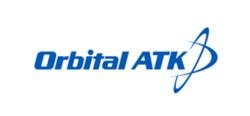Wed, Sep 14, 2016
Next-Generation Joint Polar Satellite System-2 Spacecraft On Schedule For 2020 Delivery
Orbital ATK has successfully completed NOAA’s Joint Polar Satellite System (JPSS) Spacecraft Preliminary Design Review (PDR) for JPSS-2, and the Polar Follow-On/JPSS -3 and -4. Built on Orbital ATK’s proven and reliable LEOStar-3TM platform, these spacecraft will host instruments that provide essential operational space-based weather observations for the National Oceanic and Atmospheric Administration (NOAA).

The four-day spacecraft PDR was conducted August 29 through September 1 at Orbital ATK’s facility in Gilbert, Arizona where the spacecraft are being designed and built. Representatives from NOAA and NASA, including satellite instrument providers and independent reviewers, participated in this important program milestone.
“Our JPSS spacecraft Preliminary Design Review successfully demonstrated that we are meeting all system and schedule requirements,” said Steve Krein, Vice President of Science and Environmental Programs at Orbital ATK. “Our customers are pleased with the spacecraft’s design progress, which allows us to proceed with detailed design and long-lead build schedules in preparation for the Spacecraft Critical Design Review for the JPSS-2 satellite.”
The JPSS-2 satellite will join a constellation of satellites, including the Suomi National Polar-orbiting Partnership and JPSS-1, which gather global measurements of atmospheric, terrestrial and oceanic conditions. During the required seven-year design life, JPSS-2 will deliver observations essential for accurate forecasting up to seven days ahead of severe weather like hurricanes, tornadoes and blizzards. The data collected will also be used to assess environmental hazards such as sea ice, floods, volcanic ash, wild fires and poor air quality. The result is timely and accurate public forecasts that reduce the potential loss of life and property and minimize economic impact.
While Orbital ATK has designed and built a wide variety of innovative Earth science, commercial imaging and defense satellites, the spacecraft for JPSS are the first weather operations spacecraft the company will design and produce. With the spacecraft PDR complete, Orbital ATK is proceeding to the Spacecraft Critical Design Review (CDR), currently scheduled for second quarter CY 2017. Once delivered to the Vandenberg Air Force Base launch site in California, Orbital ATK will support launch and early on-orbit checkout of the satellite.
(Source: Orbital ATK news release)
More News
The Industry Continues to be Rocked By Some Questionable Operations Recent investigations and a great deal of data has resulted in ANN’s SportPlane Resource Guide’s rep>[...]
Make Sure You NEVER Miss A New Story From Aero-News Network Do you ever feel like you never see posts from a certain person or page on Facebook or Instagram? Here’s how you c>[...]
Visual Approach Slope Indicator (VASI) An airport lighting facility providing vertical visual approach slope guidance to aircraft during approach to landing by radiating a directio>[...]
Airport Marking Aids Markings used on runway and taxiway surfaces to identify a specific runway, a runway threshold, a centerline, a hold line, etc. A runway should be marked in ac>[...]
Aero Linx: The Skyhawk Association The Skyhawk Association is a non-profit organization founded by former Skyhawk Pilots which is open to anyone with an affinity for the A-4 Skyhaw>[...]
 Unfortunate... ANN/SportPlane Resource Guide Adds To Cautionary Advisories
Unfortunate... ANN/SportPlane Resource Guide Adds To Cautionary Advisories ANN FAQ: Turn On Post Notifications
ANN FAQ: Turn On Post Notifications ANN's Daily Aero-Term (04.29.24): Visual Approach Slope Indicator (VASI)
ANN's Daily Aero-Term (04.29.24): Visual Approach Slope Indicator (VASI) ANN's Daily Aero-Term (04.28.24): Airport Marking Aids
ANN's Daily Aero-Term (04.28.24): Airport Marking Aids ANN's Daily Aero-Linx (04.28.24)
ANN's Daily Aero-Linx (04.28.24)



